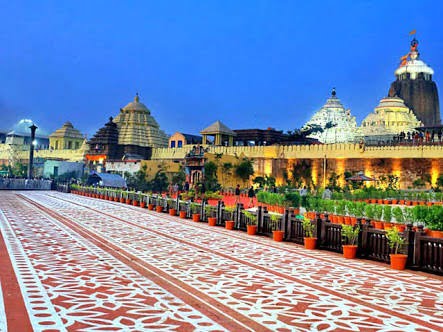Puri Heritage Corridor: Work In ‘Prohibited Zone’ Must Stop, Says BJP

Puri: The Puri heritage corridor project, a beautification plan around the 12th-century Jagannath temple, has snowballed into a huge controversy with the ruling BJD and opposition BJP crossing swords over the issue.
The BJP’s main objection to the project is that digging and excavation are being carried out under the project within the ‘prohibited area’ of the temple, a protected monument. It has alleged that the state government has taken permission from neither the Archaeological Survey of India (ASI) nor the National Monument Authority (NMA).
Areas up to 100 metres of a protected monument fall under ‘prohibited area’ in which any type of excavation and construction is totally prohibited. Areas up to 200 metres beyond the ‘prohibited area’ fall under ‘regulated area’, in which permission from the competent authority is required to carry out any construction.
The BJP has also questioned the use of heavy machinery for digging work close to the temple after BJD’s claims that only toilet blocks and civic amenities were being constructed.
BJP leader and Bhubaneswar MP Aparajita Sarangi on Monday tweeted an ASI letter, dated February 5, 2022, to the authorities concerned to stop work in the ‘prohibited area’.
Odisha Chief Secretary Suresh Chandra Mahapatra, during his visit to the temple on Monday, however, said all work was being done in coordination with the ASI.
According to a report published in The Hindu (April 4, 2022), on February 21, ASI Director-General V Vidyavathi, after inspecting the project, said, “The proposed amenities fall within the ‘prohibited area’ of the temple. Government was also requested to keep the entire design simple in tandem with the spiritual nature of the entire temple complex.”
According to the report, “one point of discussion was the proposed reception centre, part of which is situated at a distance of 75 metres from the temple”.
Vidyavathi had suggested to the state government to slightly move the building beyond 100 metres.
“Certain structures such as public toilets, drainage and electric or telephone lines are allowed in a ‘prohibited zone’. The structures need the ASI’s approval. Though the ASI has power to take legal action against any violation, it has sent a letter to the Odisha government considering it as government agency,” the report quoted a senior ASI official.
Raising the issue in the Lok Sabha, Aparajita recently said, “As per the Ancient Monuments and Archaeological Sites and Remains (AMASR) Act, 1958, no new construction can take place within a radius of 100 metres of a monument which is treated as a ‘prohibited zone’. The area up to 200 metres is known as ‘regulated zone’. The NMA’s permission is compulsory for any construction,” Sarangi said.
“It is a matter of great concern that massive construction work is taking place within 100 and 200 metre area of the temple. No permission of NMA and ASI has been taken. The work which is a threat to temple must stop,” she said.

Comments are closed.